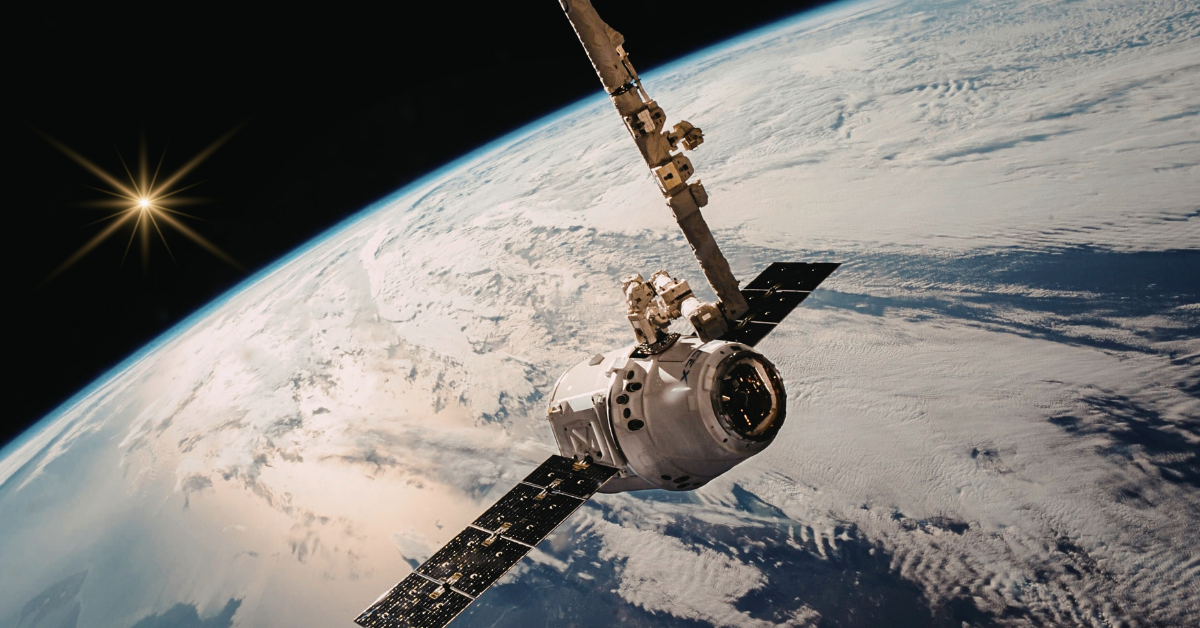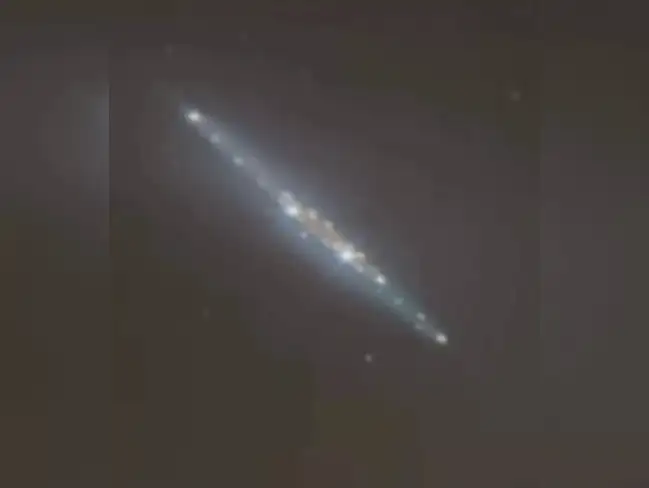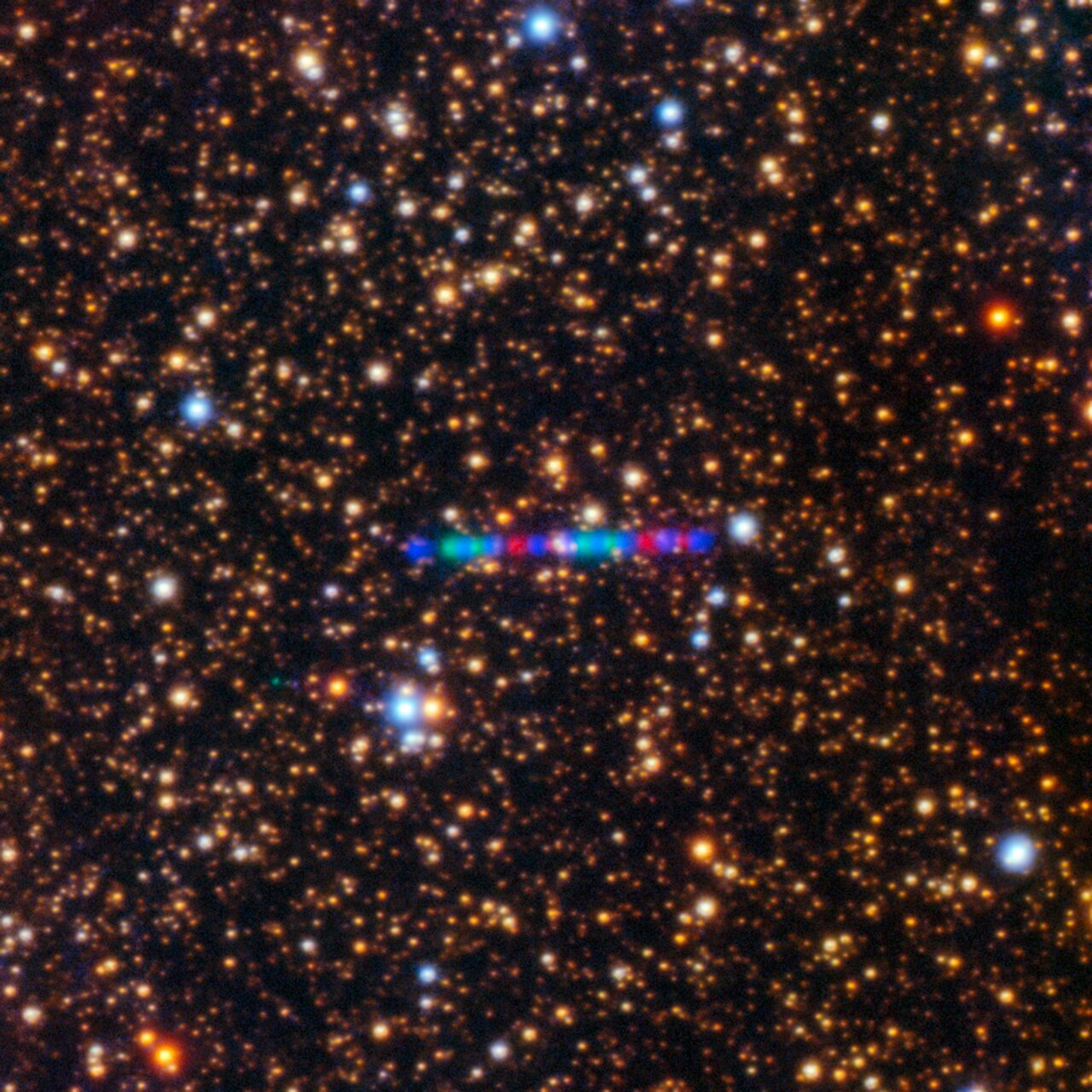- NASA is withholding high-resolution HiRISE images of interstellar 3I/ATLAS, sparking scientific and national security concerns amid a government shutdown.
- Observed anomalies—non-gravitational acceleration, anti-tail, and metallic spectral hints—raise debate over natural cometary behavior versus possible artificial origins.
Washington, D.C. – November 4, 2025 – As the third confirmed interstellar object streaks through our solar system, NASA’s prolonged silence on high-resolution images captured by its Mars orbiter has ignited a firestorm of concern among astronomers, defense experts, and policymakers.
The object, designated 3I/ATLAS, was snapped in unprecedented detail on October 2-3 by the High Resolution Imaging Science Experiment (HiRISE) instrument aboard the Mars Reconnaissance Orbiter, just as it passed within 30 million kilometers of the Red Planet.
Yet weeks later, those images remain locked away, fueling speculation that what appears to be a comet may harbor anomalies with profound implications for U.S. national security.
The FrankNez Media Daily Briefing newsletter provides all the news you need to start your day. Sign up here.
Discovered on July 1, 2025, by the NASA-funded Asteroid Terrestrial-impact Last Alert System (ATLAS) telescope in Chile, 3I/ATLAS follows a hyperbolic trajectory that confirms its origin beyond our solar system – a cosmic drifter unbound by the Sun’s gravity.
At speeds exceeding 130,000 miles per hour, it marks only the third such visitor after the enigmatic 1I/’Oumuamua in 2017 and 2I/Borisov in 2019.
Publicly available data from telescopes like Hubble and James Webb paint a picture of a teardrop-shaped dust cocoon enveloping an icy nucleus roughly 3.5 miles wide, rich in carbon dioxide and water vapor – hallmarks of a typical comet transformed by billions of years of interstellar radiation.
But the unreleased HiRISE shots, offering three times the resolution of Hubble’s July 21 imagery at 30 kilometers per pixel, could reveal structural irregularities or jet behaviors that challenge that narrative.
The Delay Coincides with U.S. Government Shutdown
The delay, now stretching into its second month, coincides with a U.S. government shutdown that began October 1, halting routine data processing and public releases from federal agencies.
NASA officials have attributed the holdup to calibration needs, internal reviews, and administrative bottlenecks – standard hurdles for raw scientific data requiring validation before dissemination.
“Transparent data release is a key part of the scientific process,” noted one analysis in The Economic Times, underscoring how such lags erode public trust and slow peer scrutiny.
Yet in an era of escalating space rivalries, this opacity has amplified whispers that the images might depict something far more unsettling than a frozen relic from another star.
Harvard astrophysicist Avi Loeb, a vocal proponent of scrutinizing interstellar anomalies, has led the charge for immediate disclosure. In a Medium post dated October 31, Loeb dismissed conspiracy theories but lambasted the holdup as “terrestrial stupidity” rather than evidence of extraterrestrial cover-ups.
Speaking to NBC News, he elaborated: “Some people ask me about the government shutdown, whether there is any conspiracy to hold off the data from the public. And I said that, well, the delay is not the signature of extraterrestrial intelligence, it’s more a signature of terrestrial stupidity.”
What Makes 3I/ATLAS So Unique?
Loeb’s concerns stem from 3I/ATLAS’s peculiarities: an unusually large size, a faint or absent tail, and spectral hints of nickel alloys – compositions more akin to industrial metals than pristine cometary ice.
In a paper titled “Is the Interstellar Object 3I/ATLAS Alien Technology?”, Loeb warned that if artificial origins are confirmed, “the consequences… could potentially be dire for humanity, and would possibly require defensive measures.”
NASA has rebuffed such notions, with solar system small bodies lead Tom Statler affirming to The Guardian: “It looks like a comet. It very, very strongly resembles, in just about every way, the comets that we know.”
Beyond scientific curiosity, the object’s quirks have prompted quiet activations of planetary defense protocols, thrusting it into the realm of national security.
For example:
- Trump and Musk have teamed up to create the “Golden Dome” missile shield project — a constellation of up to 600 satellites designed to track incoming missiles and aircraft in real time.
- GOP members have been fighting for a top NASA position amid increased UAP sightings. The Pentagon, as well as Secretary of State Marco Rubio, have confirmed that UFO phenomena has occurred over sensitive U.S. nuclear facilities.
- The United States partners up with South Korea, building nuclear powered submarines amid increase in underwater UFO encounters — Congressman Tim Burchett claims the existence of 5-6 underwater UAP bases in the coasts of the United States. Enigma Labs systems have also been triggered by the secret phenomena.
NASA’s Center for Near-Earth Object Studies added 3I/ATLAS to its watchlist in late October, citing “erratic changes in speed, brightness, and trajectory” observed as it neared perihelion on October 30.
The latest news on 3I/ATLAS points to the interstellar object showing no signs of ‘gravitational’ acceleration. Translation: something is thrusting it.
An “anti-tail” – a particle jet anomalously pointing toward the Sun – defies cometary physics, while non-gravitational acceleration suggests outgassing forces or, in the most mysterious case, propulsion-like effects.
The International Asteroid Warning Network (IAWN), a U.N.-endorsed consortium including NASA and the European Space Agency, launched a global tracking exercise from November 27 to January 27, 2026, to hone detection of such high-velocity intruders.
Defense analysts view 3I/ATLAS as a stark wake-up call for space-domain awareness. Traveling at velocities that expose gaps in surveillance networks, it could mimic adversarial hypersonic threats or satellite-disrupting debris.
“Without coordination, the world risks misinterpreting natural phenomena as potential threats, leading to confusion or unnecessary alarm,” cautioned experts in a Dagens report.
Echoing ‘Oumuamua’s 2017 flyby, which spurred debates on interstellar object (ISO) interception tech, this visitor underscores vulnerabilities in U.S. orbital defenses amid rising tensions with China and Russia.
The Observer Research Foundation noted that enhanced ISO detection “cannot be downplayed or ignored, necessitating… greater global cooperation in the field.”
Public Intrigue Grows Amid Soft Disclosure
International partners have filled some voids left by NASA’s impasse. The European Space Agency’s ExoMars Trace Gas Orbiter captured 3I/ATLAS as a fuzzy white dot on October 3, revealing steady outgassing with no major outbursts – a relief for trajectory predictions.
NASA’s SPHEREx mission, observing from August 7-15, detected early cometary activity dating back to May 2025, while James Webb’s August 6 infrared scans confirmed a CO2-dominated coma with water ice and carbonyl sulfide traces – clues to ancient planetary formation elsewhere in the galaxy.
Swift telescope data from July-August revealed an ultraviolet signal hinting at vaporizing icy grains, a “major breakthrough” for understanding life-hosting potential in distant systems.
Even as data trickles in, public intrigue has surged, blending unease with majority in awe. Social media buzz, including queries from celebrities like Kim Kardashian, prompted NASA Acting Administrator Sean Duffy to clarify on X: “No aliens. No threat to life here on Earth.”
Yet unsubstantiated claims – from Chinese agencies “exposing” hidden NASA finds to deepfakes of physicists admitting alien origins – have proliferated, complicating official messaging.
With 3I/ATLAS now emerging from behind the Sun for predawn visibility starting November 11, astronomers anticipate brighter tails and potential fragmentation as it slingshots toward Jupiter by March 2026.
Michigan State University’s Darryl Seligman emphasized the stakes: “Observing such a rare occurrence is extremely valuable for us, because it’s the only opportunity to look at this object before it moves out of our solar system.”
In the meantime, Rep. Anna Paulina Luna has requested NASA release full clear 3I/ATLAS images.
For national security hawks, the real urgency lies in fortifying defenses against the unknown – whether cosmic iceball or something engineered from the void.
As calls for the HiRISE release grow louder, the saga of 3I/ATLAS serves as a reminder: In the vastness of space, transparency isn’t just good science – it’s essential strategy.
NASA has pledged updates as shutdown constraints lift, but for now, the stars hold their secrets close.
Also Read: Congressman Now Claims Existence of Five Underwater UFO Bases Off U.S. Coast
Google is changing how it surfaces content. Prioritize our high-quality news and industry-leading coverage in search results by setting FrankNez Media as a preferred source.
















